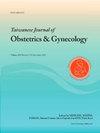Low antimüllerian hormone (<1.2 ng/ml) does not impact oocyte quality and IVF/ICSI outcomes in women ≤40 years old
IF 2
4区 医学
Q2 OBSTETRICS & GYNECOLOGY
引用次数: 0
Abstract
Objective
This study retrospectively investigates whether diminished ovarian reserve (DOR), as measured by serum anti-müllerian hormone (AMH), impacts oocyte quality and IVF/ICSI outcomes in the cleavage embryo or blastocyst stage or not.
Materials and methods
We retrospectively reviewed 1677 women aged ≤40 years who underwent 1862 IVF/ICSI cycles and divided patients into two groups: low-AMH included the patients with AMH levels <1.2 ng/ml, and normal-AMH included the patients with AMH values ≥1.2 ng/ml. Ovarian stimulation response till fertilization condition and fresh transfer outcomes were compared between the two groups.
Results
The cancellation rate was significantly higher in the low-AMH group than in the normal-AMH group (12.6 % vs 2.2 %, p < 0.001). The MII oocyte retrieval and available embryos were significantly higher in the normal-AMH group than in the low-AMH group. There were no significant differences in the implantation rates (IR), miscarriage rate (MR) and live birth rate (LBR) in cleavage embryo transfer (IR:20.90 % vs 21.59 %, p = 0.787; MR:18.8 % vs 22.3 %, p = 0.543; LBR:29.3 % vs 30.9 %, p = 0.686) and blastocyst transfer (IR:43.92 % vs 44.09 %, p = 0.819; MR:6.7 % vs 15.8 %, p = 0.486; LBR:48.1 % vs 45.1 %, p = 0.758) between the two groups.
Conclusions
Ovarian reserve, measured by circulating AMH, correlates with cycle cancellation rate and predicts the recovery of oocyte numbers and available embryos after conventional ovarian hyperstimulation but not oocyte quality or IVF/ICSI outcomes in women ≤40 years old.
Trial registration
The study protocol was retrospectively registered and was approved by Institutional Review Board of Mackay Memorial Hospital (21MMHIS219e) on August 26, 2021.
低抗勒氏杆菌激素(<1.2 ng/ml)不影响≤40岁女性的卵母细胞质量和IVF/ICSI结果
目的回顾性研究血清抗勒氏激素(AMH)测定的卵巢储备减少(DOR)是否会影响卵裂胚胎或囊胚期的卵母细胞质量和IVF/ICSI结果。材料与方法回顾性分析1677例年龄≤40岁,接受过1862次IVF/ICSI周期的女性患者,并将患者分为两组:低AMH组包括AMH≥1.2 ng/ml的患者,正常AMH组包括AMH≥1.2 ng/ml的患者。比较两组受精前卵巢刺激反应情况及新鲜移植结果。结果低amh组的取消率显著高于正常amh组(12.6% vs 2.2%, p <;0.001)。正常amh组的MII卵母细胞回收率和可用胚胎率明显高于低amh组。卵裂胚胎移植的着床率(IR)、流产率(MR)和活产率(LBR)差异无统计学意义(IR: 20.90% vs 21.59%, p = 0.787;MR: 18.8% vs 22.3%, p = 0.543;LBR: 29.3% vs 30.9%, p = 0.686)和囊胚移植(IR: 43.92% vs 44.09%, p = 0.819;MR: 6.7% vs 15.8%, p = 0.486;LBR: 48.1% vs 45.1%, p = 0.758)。结论经循环AMH测定的卵巢储备与周期取消率相关,可预测常规卵巢过度刺激后卵母细胞数量和可用胚胎的恢复,但不能预测卵母细胞质量或IVF/ICSI结果。试验注册研究方案回顾性注册,并于2021年8月26日获得Mackay Memorial Hospital (21MMHIS219e)机构审查委员会批准。
本文章由计算机程序翻译,如有差异,请以英文原文为准。
求助全文
约1分钟内获得全文
求助全文
来源期刊

Taiwanese Journal of Obstetrics & Gynecology
OBSTETRICS & GYNECOLOGY-
CiteScore
3.60
自引率
23.80%
发文量
207
审稿时长
4-8 weeks
期刊介绍:
Taiwanese Journal of Obstetrics and Gynecology is a peer-reviewed journal and open access publishing editorials, reviews, original articles, short communications, case reports, research letters, correspondence and letters to the editor in the field of obstetrics and gynecology.
The aims of the journal are to:
1.Publish cutting-edge, innovative and topical research that addresses screening, diagnosis, management and care in women''s health
2.Deliver evidence-based information
3.Promote the sharing of clinical experience
4.Address women-related health promotion
The journal provides comprehensive coverage of topics in obstetrics & gynecology and women''s health including maternal-fetal medicine, reproductive endocrinology/infertility, and gynecologic oncology. Taiwan Association of Obstetrics and Gynecology.
 求助内容:
求助内容: 应助结果提醒方式:
应助结果提醒方式:


